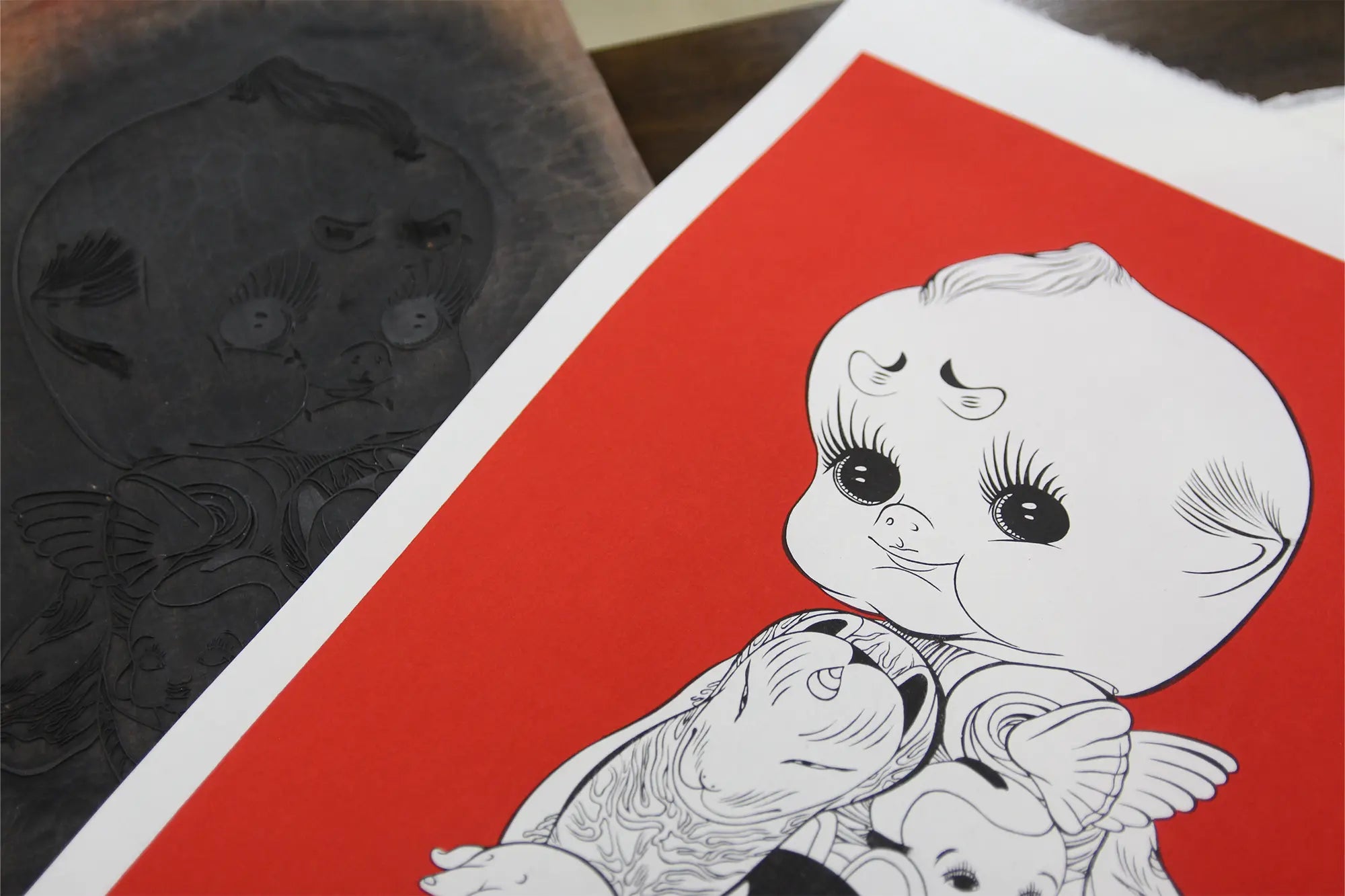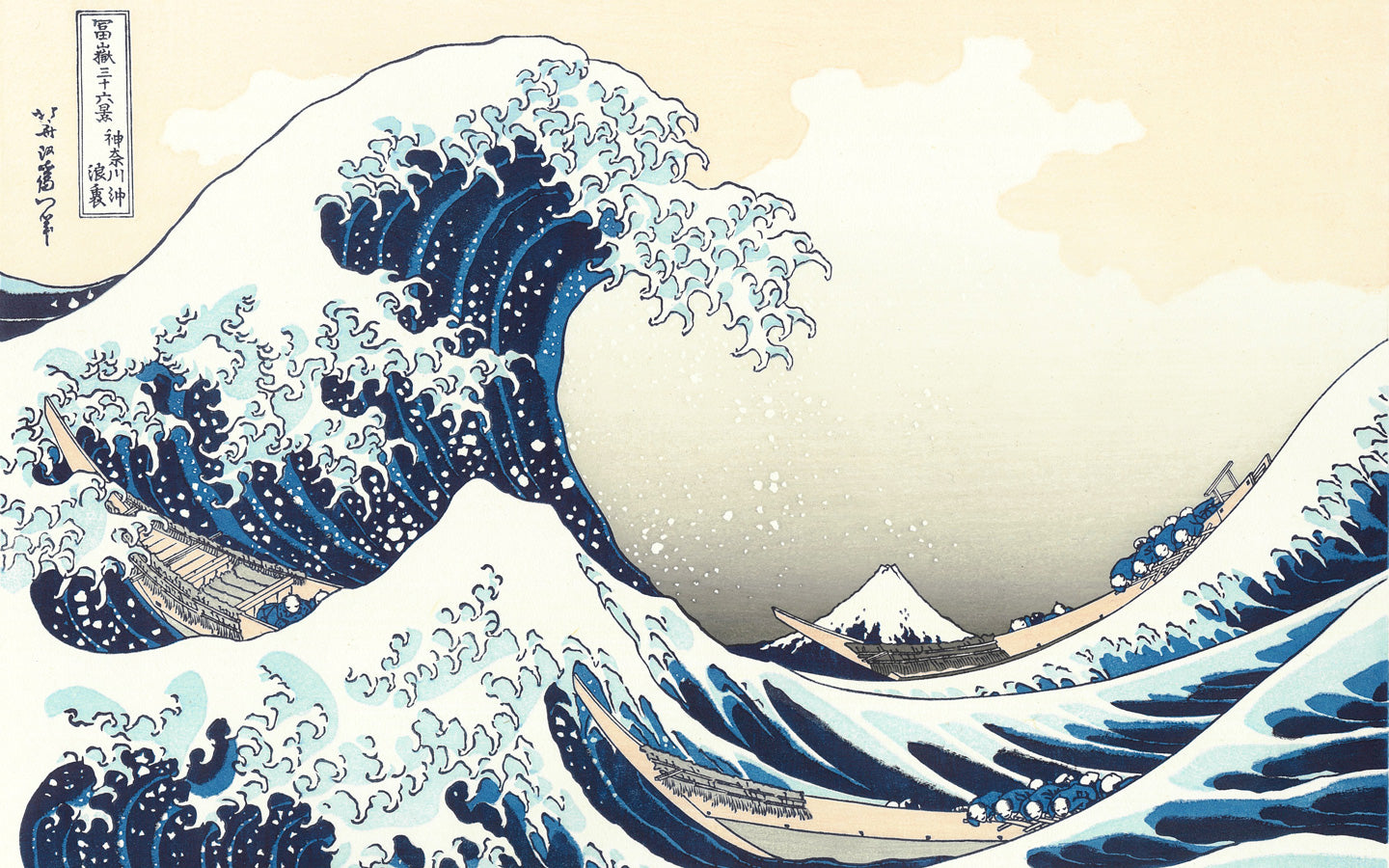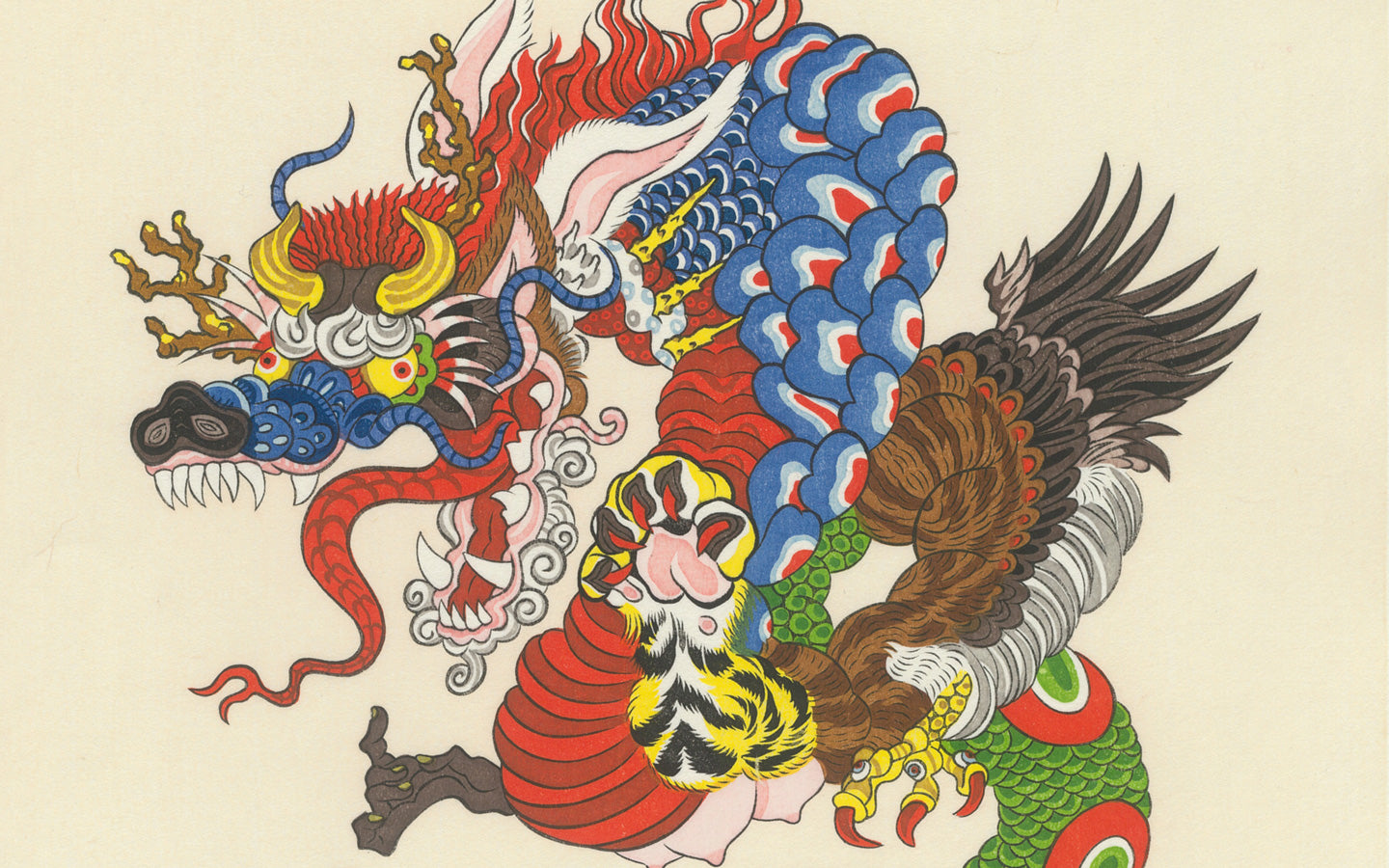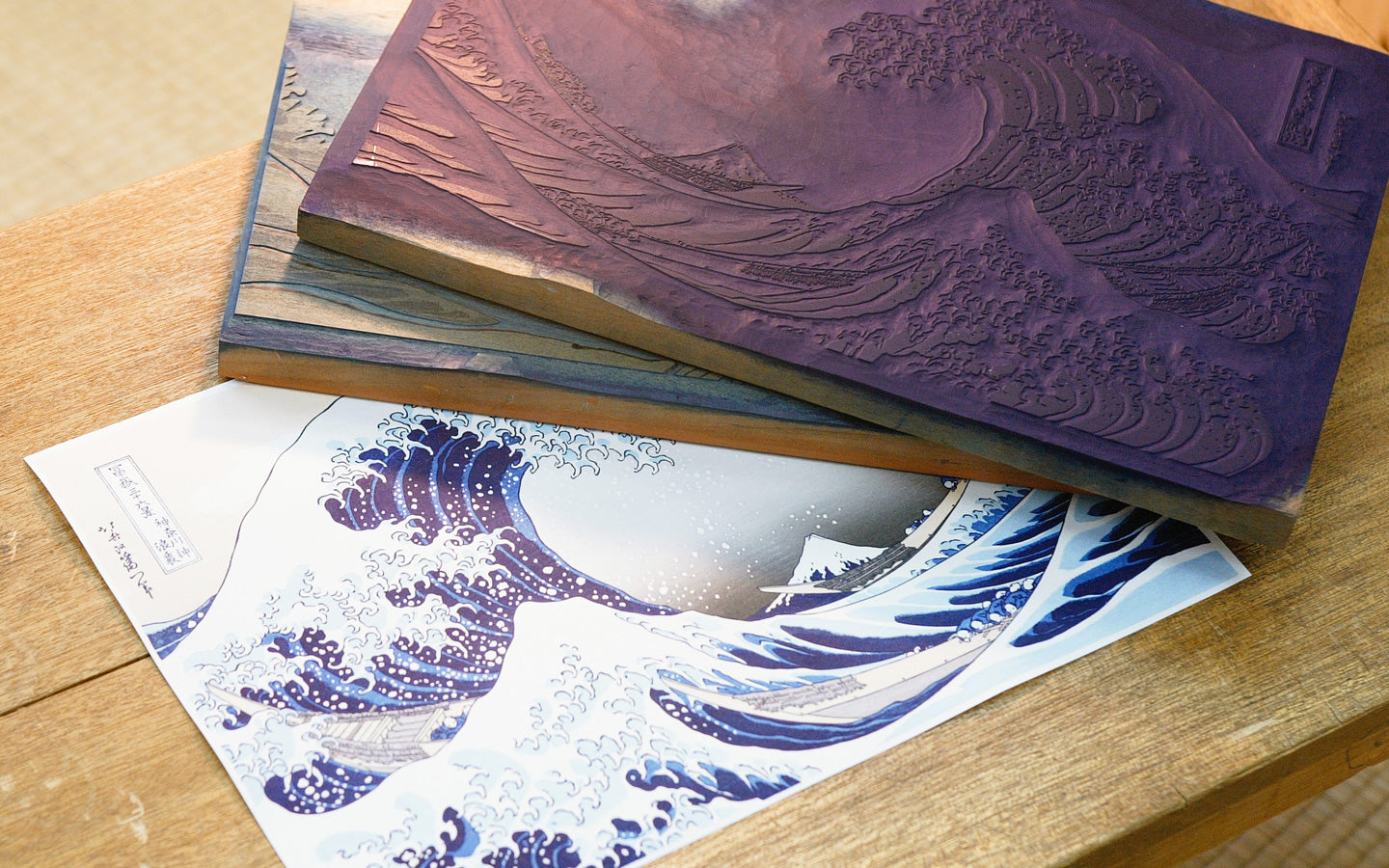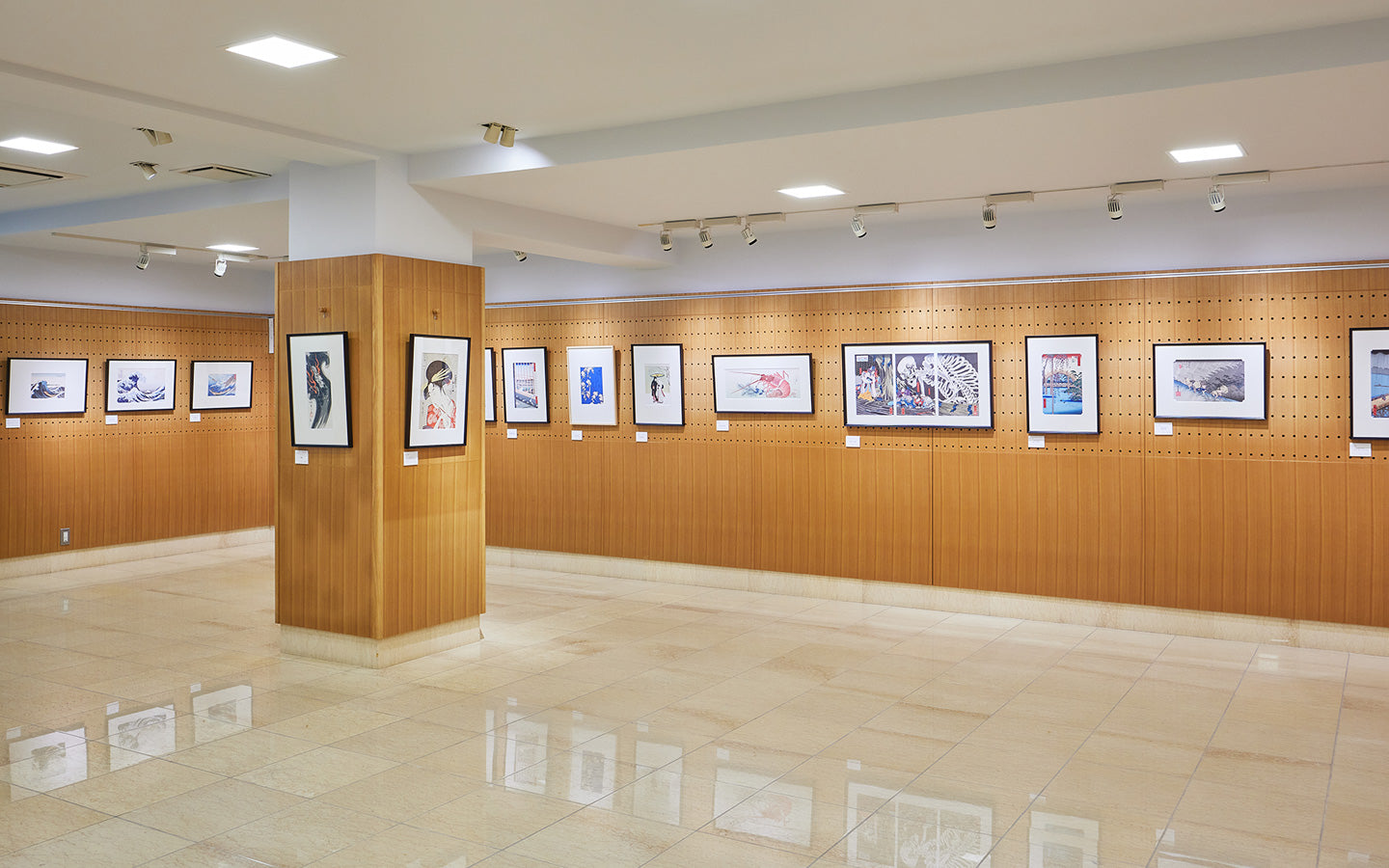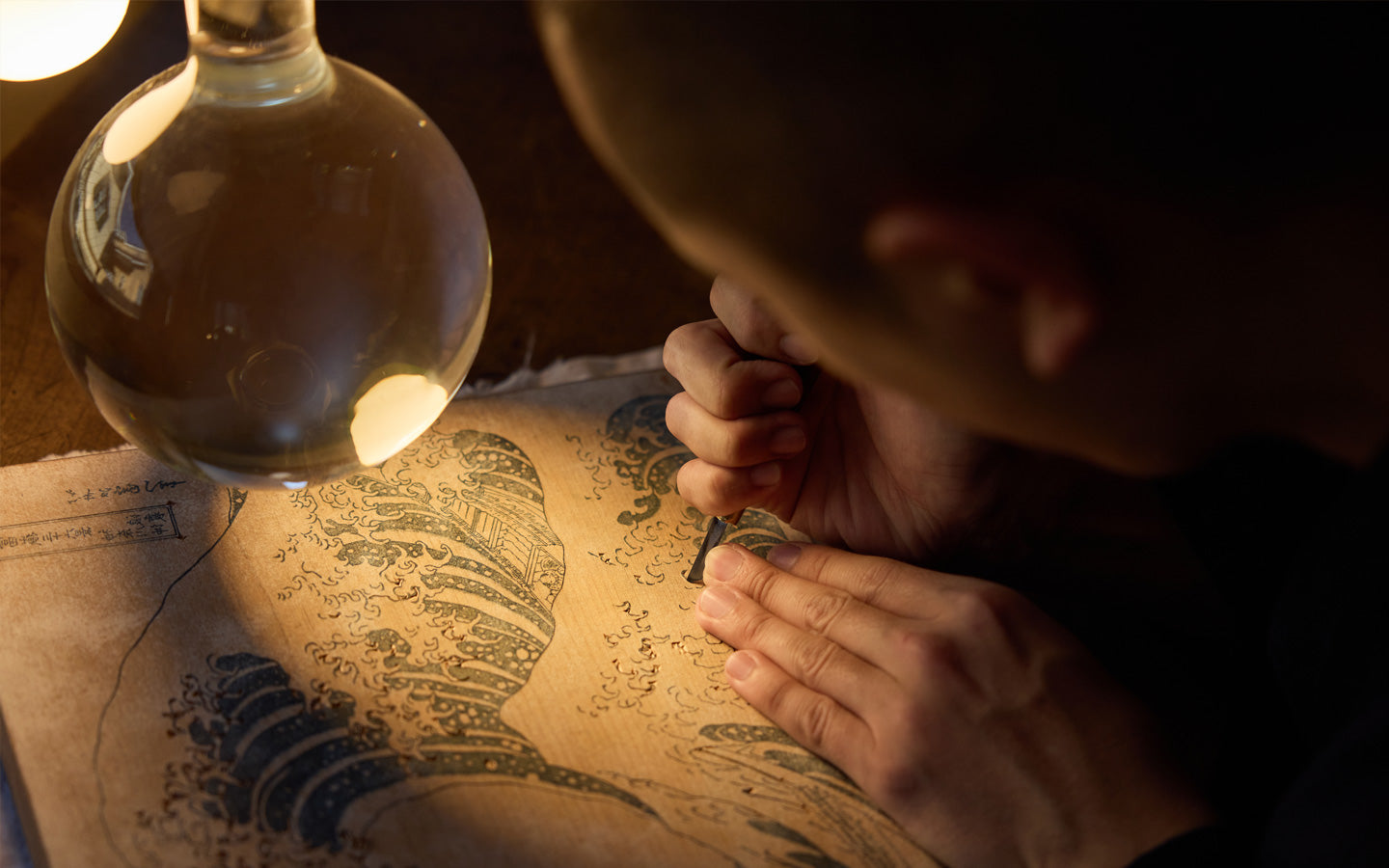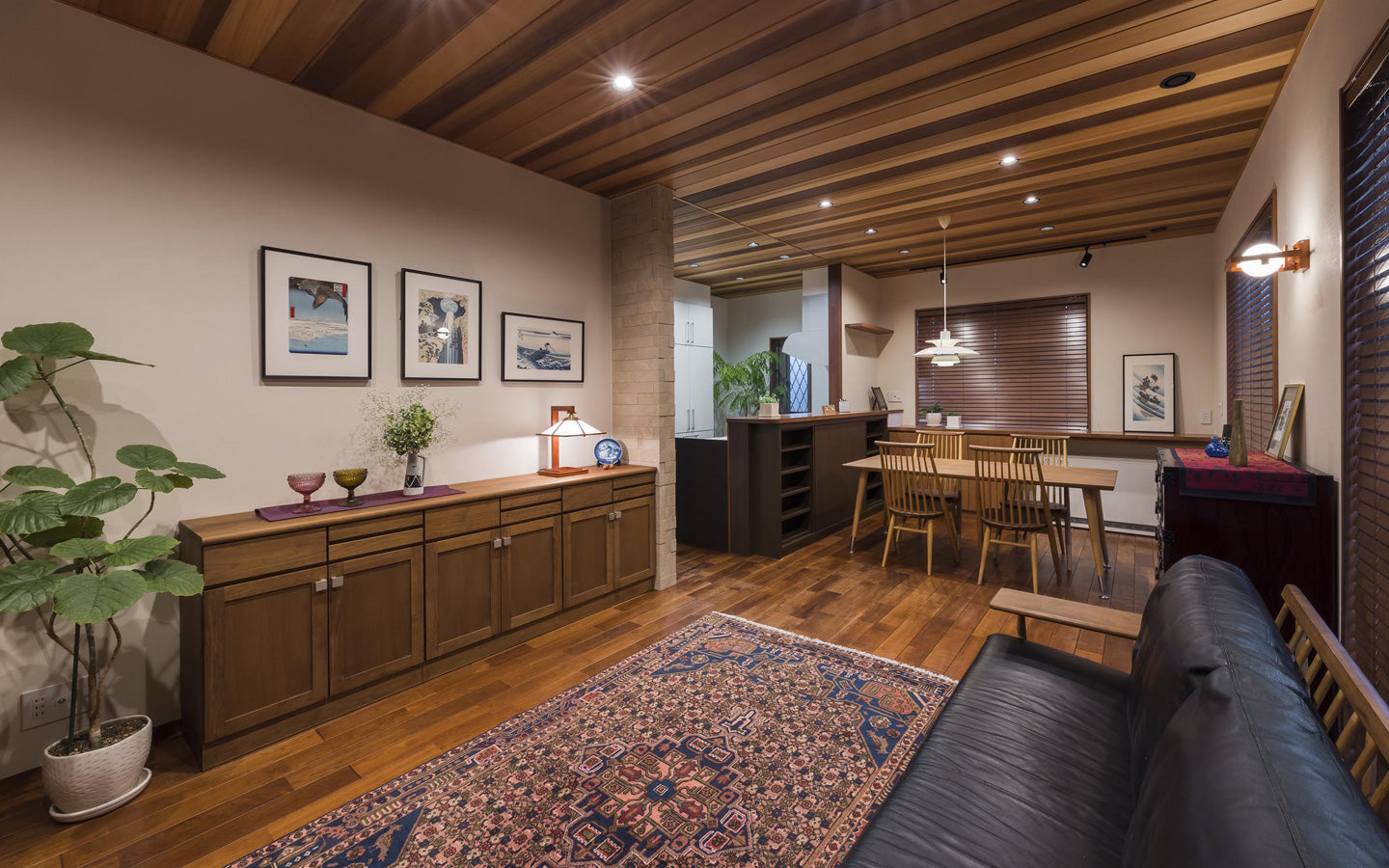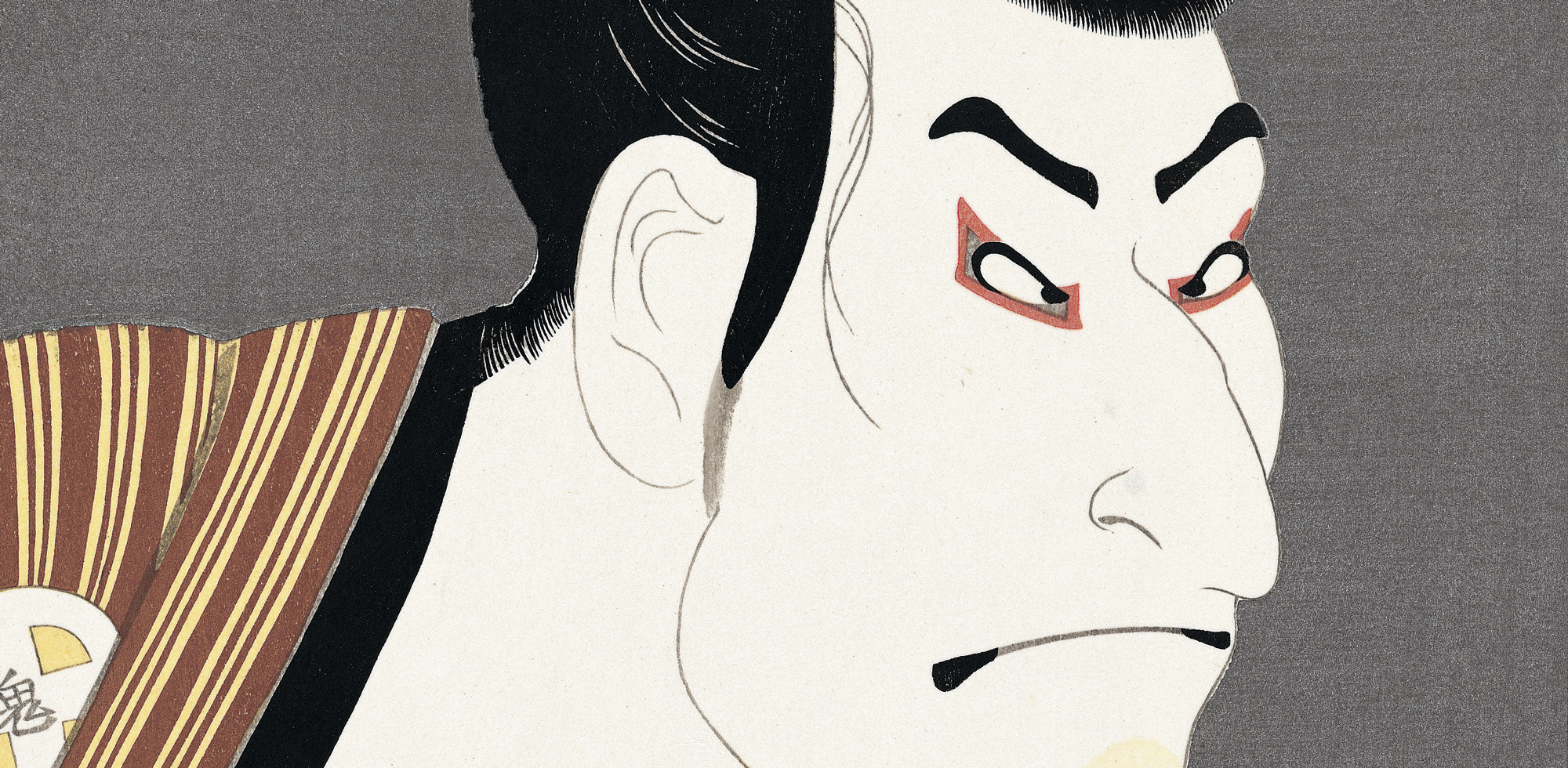
Are ukiyo-e still being made today!?
Basic Knowledge of Ukiyo-e and Woodcut Prints
What is “ukiyo-e”? Why are there so many pieces of Hokusai's "Great Wave" around the world?
We will answer questions about ukiyo-e and woodblock prints in a Q&A format.
Q: What is “ukiyo-e”? What kind of artwork is it?
A: “Ukiyo-e'' is an artform that captures the trends of the times.
The word “ukiyo'” in “ukiyo-e'' means “modern style.'” Ukiyo-e works depict popular people, fashion trends, beautiful scenery of famous places, seasonal flowers, and all kinds of things that attract people’s interest.
Ukiyo-e in the Edo Period was the largest form of mass media and was enjoyed by the people in a variety of ways, much like pictures of popular actors, photos in magazines, and picture postcards of tourist spots. Still today, ukiyo-e is pleasing to the eye and enjoyable for people with modern sensibilities.
At Adachi Institute of Woodcut Prints, we reproduce masterpieces of ukiyo-e that have been loved by many over the years, so that they can be enjoyed in the same vivid colors as the original ukiyo-e at the time of production. We are also working with contemporary artists, illustrators, and designers to create woodcut prints that express the times in which we live.
Q: Why are there so many pieces of Hokusai's "Great Wave" around the world? Were they all produced by Hokusai?
A: The reason there are so many pieces is because they were mass-produced woodcut prints created using a division of labor system. Hokusai only drew the original drawings for the woodcut prints.
Hokusai's masterpiece “The Great Wave off Kanagawa” (commonly known as the Great Wave), which is said to be the second most famous artwork after “Mona Lisa,” is a woodcut print created during the Edo Period. The artist Hokusai drew the original drawings (“hanshita-e”), carvers carved woodblocks based on Hokusai's hanshita-e, and printers printed each color one by one on Japanese paper to complete the work. Ukiyo-e works were mainly sold at Edo Period bookstores called “ezoshiya.” Eventually, the works traveled across the ocean and became part of the collections of museums and collectors around the world.
Adachi Institute of Woodcut Prints is a studio that continues to carry on the traditional woodcut printing techniques that produced Hokusai's masterpieces.
Q: How is Ukiyo-e evaluated around the world?
A: Ukiyo-e is highly regarded as a unique artistic culture born from the creativity of artists and the advanced techniques of artisans.
Ukiyo-e flourished in the culture of common people in the 18th century. The advanced culture in Edo, where everyone could easily obtain a wide variety of full-color printed matter, is unique in world history.
Impressionist painters, who were searching for new forms of expression, drew much inspiration from the bold compositions of ukiyo-e prints and the transparent colors of woodcut prints. It is well known that Monet and Van Gogh collected ukiyo-e prints.
Today, ukiyo-e continues to fascinate people all over the world. Adachi's showroom in Mejiro has been introduced in many tourists guides as a place that introduces the culture of ukiyo-e that is still alive today. We also have English-speaking staff at the showroom. Please feel free to visit us.
Q: Are ukiyo-e still being made today?
A: Yes. They are being produced by artisans who have inherited techniques from the Edo Period.
Ukiyo-e production techniques have been passed down from artisan to artisan from the Edo Period to the present, and even today there are artisans called carvers and printers. While the preservation of these traditional techniques is highly praised overseas, there is a serious lack of successors. This is due to changes in society and the environment, as well as the fact that advanced carving and printing techniques, which are specialized due to the division of labor, take a long time to master.
Adachi Institute of Woodcut Prints is a studio and publisher that employs carvers and printers and strives to bring up artisans. At present, artisans in their 20s to 40s are working hard to improve their skills each and every day.
Q: How did people in the Edo Period enjoy ukiyo-e?
A: They displayed them in their homes, collected them, and gave them as souvenirs.
The image size of most ukiyo-e prints is about B4 size (257 mm × 364 mm). As a piece of art, they are on the smaller side. And so, anyone could enjoy them in their own homes. Also, since they were thin and light, they could be enjoyed by collecting series of works or taking them back to the countryside as souvenirs from Edo.
Ukiyo-e reproductions are produced so that people can enjoy them in their daily lives, just as they did in the Edo Period. They are also affordable. Many people around the world use them as interior decorations and as gifts.
Moreover, at Adachi Institute of Woodcut Prints, we have special frames that match the size of the ukiyo-e prints so that you can enjoy displaying your ukiyo-e on the walls of your modern home. The special frames are designed so that you can easily replace the prints inside.
Q: It is common practice to number prints. Where is the edition number placed on an ukiyo-e?
A: Ukiyo-e do not have edition numbers.
Ukiyo-e prints from the Edo Period were mass-produced, so there was no limit to the number of copies produced. If an ukiyo-e was selling well, publishers would print more copies until the woodblocks wore out.
The idea of ukiyo-e reproductions is an extension of this idea. Therefore, the ukiyo-e reproductions produced at Adachi Institute of Woodcut Prints do not have edition numbers. However, we stamp the back of the prints so that you can tell that they were made by Adachi.
In addition, when we work with contemporary artists to create prints, we first decide on the number of prints to be produced, add an edition number, and have each piece signed by the artist.
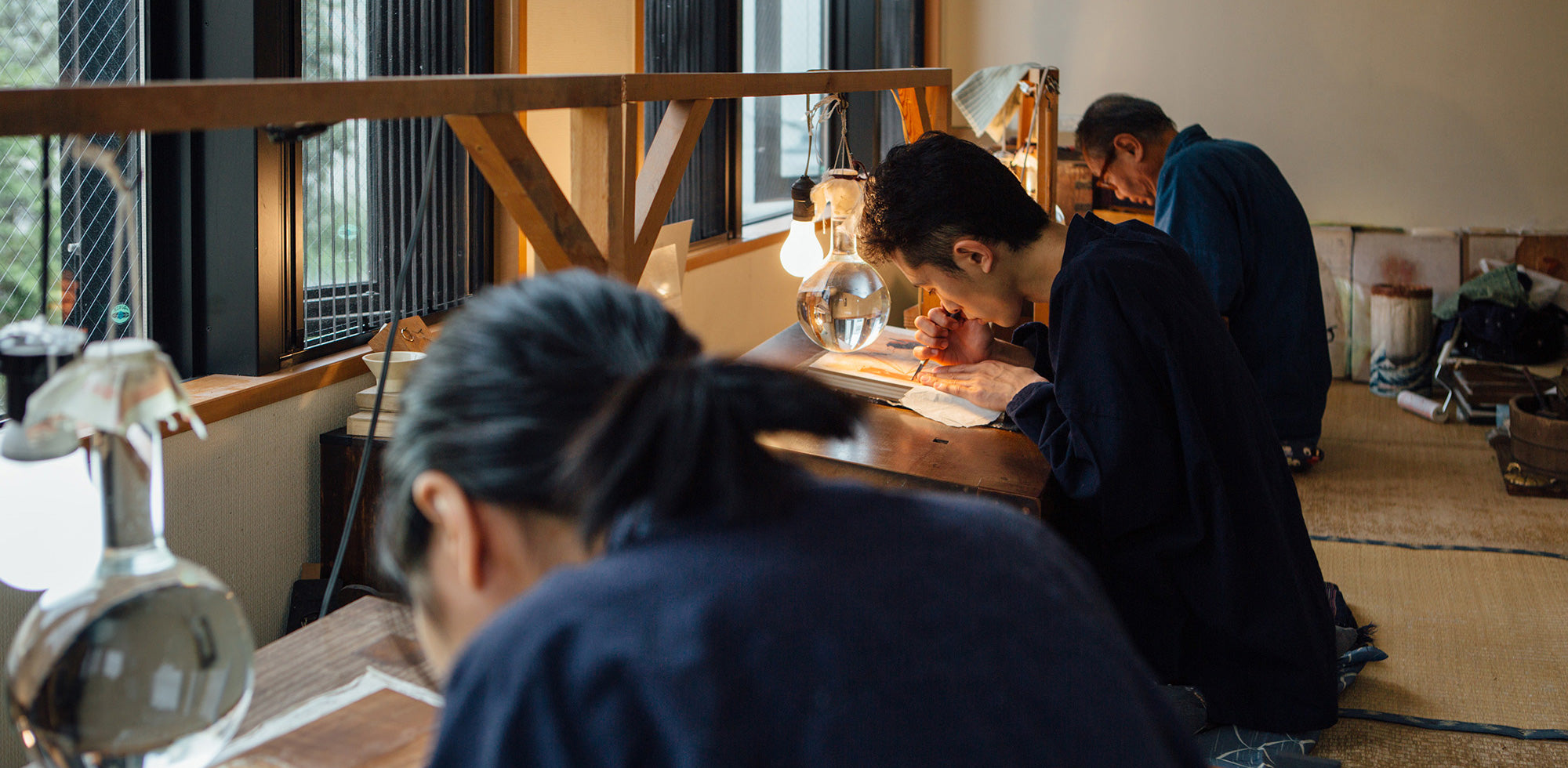
Our mission
Passing down traditional woodcut printing techniques to present and future generations
Even in today's world where digital technology has permeated people's lives, woodcut prints, created using craftsmanship that have been passed down over many years, inspire people and enrich their daily lives. At Adachi Institute of Woodcut Prints, we create attractive works that are in keeping with the times while maintaining the basics of traditional woodcut printing techniques.
Details
